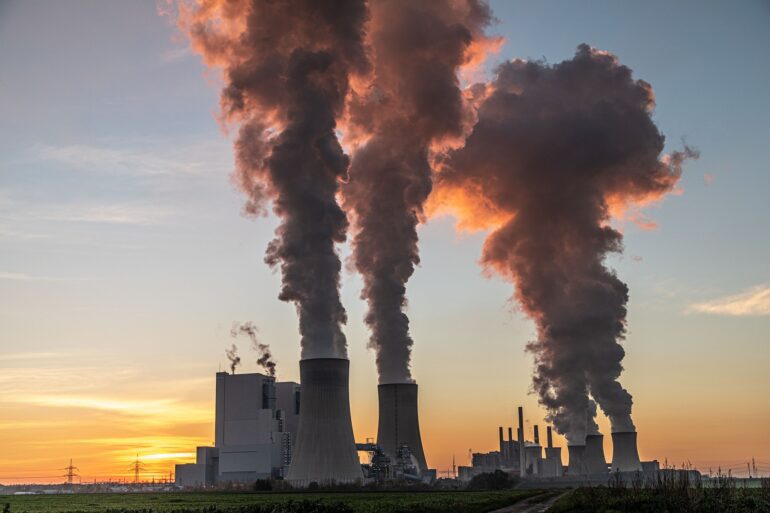TL;DR:
- Carbon trading is a market-based approach to control pollution and combat climate change.
- Machine learning algorithms play a crucial role by analyzing data and identifying trends.
- Predictive modeling helps traders anticipate market trends and make strategic investments.
- Risk management with machine learning minimizes regulatory and market risks.
- Machine learning optimizes carbon offset projects for maximum environmental impact.
- Benefits include enhanced efficiency, improved accuracy, and increased environmental impact.
- Challenges like ethics and data privacy need to be addressed.
- The integration of machine learning into carbon trading paves the way for a sustainable future.
Main AI News:
In the quest for sustainable solutions to combat climate change, the convergence of technology and environmental conservation has given rise to innovative approaches. A remarkable development in this endeavor is the integration of machine learning into carbon trading—a dynamic process poised to revolutionize investments and propel us towards a greener future.
Comprehending Carbon Trading
Carbon trading, often known as carbon emissions trading, operates as a market-driven strategy for pollution control. By offering economic incentives for reducing pollutant emissions, this system assumes a pivotal role in the battle against climate change. Within the context of climate change, carbon trading primarily revolves around curbing greenhouse gas emissions. Furthermore, entities or nations that emit fewer greenhouse gases can trade their surplus allowances with larger emitters. This mechanism creates a compelling financial motivation for companies to diminish their carbon footprint, nurturing a sustainable environment for future generations.
The Role of Machine Learning
Machine learning, a facet of artificial intelligence, has emerged as a formidable tool in the realm of carbon trading. Harnessing algorithms and computational models, machine learning technologies possess the capacity to dissect copious datasets, unearthing patterns and trends. These revelations empower businesses and policymakers to make judicious decisions regarding their carbon trading investments, thereby optimizing their strategies for a sustainable future.
Data Analysis and Predictive Modeling
Machine learning algorithms are proficient in processing historical emission data, meteorological patterns, economic indicators, and other pertinent information. Through predictive modeling, these algorithms forecast future emissions, equipping traders with the ability to foresee market trends and make strategic investments. This data-centric approach elevates decision-making, ensuring that investments are channeled into endeavors with the most significant environmental impact.
Risk Management
Carbon trading is not without inherent risks, encompassing regulatory fluctuations and market volatility. Machine learning algorithms excel in assessing these risks by scrutinizing legal documents, policy updates, and market dynamics. By preemptively identifying potential challenges, investors can adapt their strategies, thereby minimizing risks and maximizing returns on their investments.
Optimizing Carbon Offset Initiatives
Machine learning algorithms are adept at evaluating the effectiveness of diverse carbon offset initiatives, including afforestation projects, renewable energy ventures, and energy efficiency endeavors. By analyzing project data and historical outcomes, these algorithms pinpoint the most impactful initiatives. This optimization guarantees that investments are directed toward projects that yield substantial environmental benefits, aligning with the overarching objective of carbon trading.
The Benefits of Machine Learning in Carbon Trading
Augmented Efficiency
Machine learning algorithms automate intricate tasks, substantially curtailing the time and effort required for data analysis. This heightened efficiency empowers traders and policymakers to concentrate on strategic decision-making, thereby enhancing the efficacy of carbon trading endeavors.
Heightened Precision
Conventional methods of data analysis may be susceptible to inaccuracies or oversights. Machine learning algorithms, in contrast, offer unparalleled precision in recognizing patterns and forecasting market trends. This precision ensures that investments are grounded in dependable insights, reducing the likelihood of financial setbacks.
Elevated Environmental Impact
By directing investments toward high-impact carbon offset projects, machine learning directly contributes to the fight against climate change. The optimized allocation of resources ensures that every invested dollar yields maximum environmental benefits, expediting the transition toward a sustainable, low-carbon future.
Challenges and Considerations
While the integration of machine learning into carbon trading promises significant opportunities, it is imperative to address associated challenges and considerations. Ethical dilemmas, data privacy concerns, and the necessity for standardized frameworks constitute vital aspects that policymakers and businesses must navigate to ensure the responsible utilization of machine learning technologies.
Paving the Way for a Greener Tomorrow
Machine learning’s integration into carbon trading signifies a pivotal stride toward a more sustainable future. By harnessing data-driven insights, businesses and policymakers can optimize investments, mitigate carbon emissions, and make meaningful contributions to global climate change mitigation efforts. As technological advancements continue, the synergy between machine learning and environmental conservation will assume a pivotal role in shaping a sustainable world for generations to come.
Conclusion:
The integration of machine learning into carbon trading holds tremendous potential for businesses and policymakers. By harnessing data-driven insights, they can optimize investments, reduce carbon emissions, and contribute significantly to the fight against climate change. This advancement represents a transformative opportunity in the market, driving greater efficiency and environmental impact in carbon trading initiatives.

